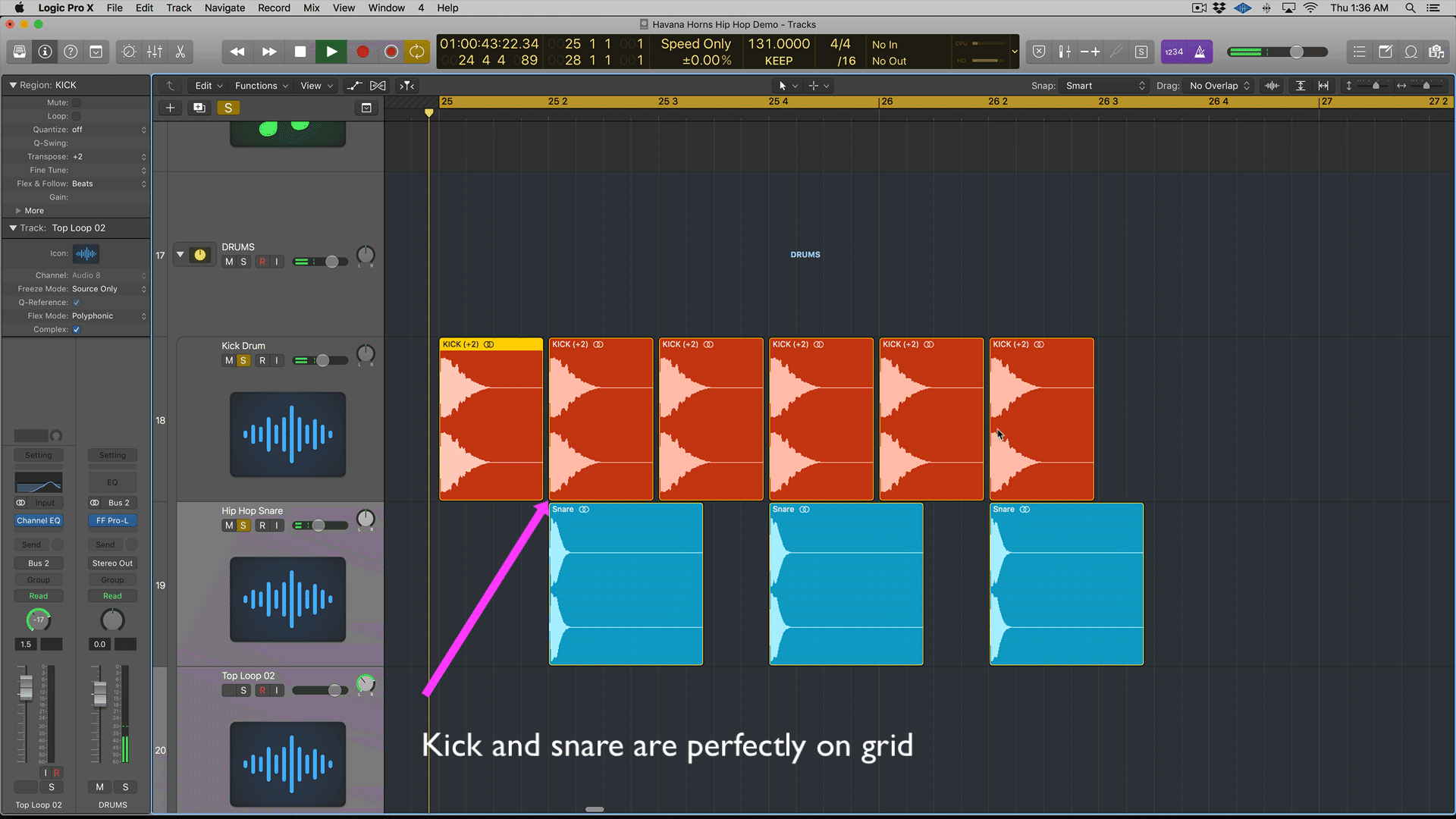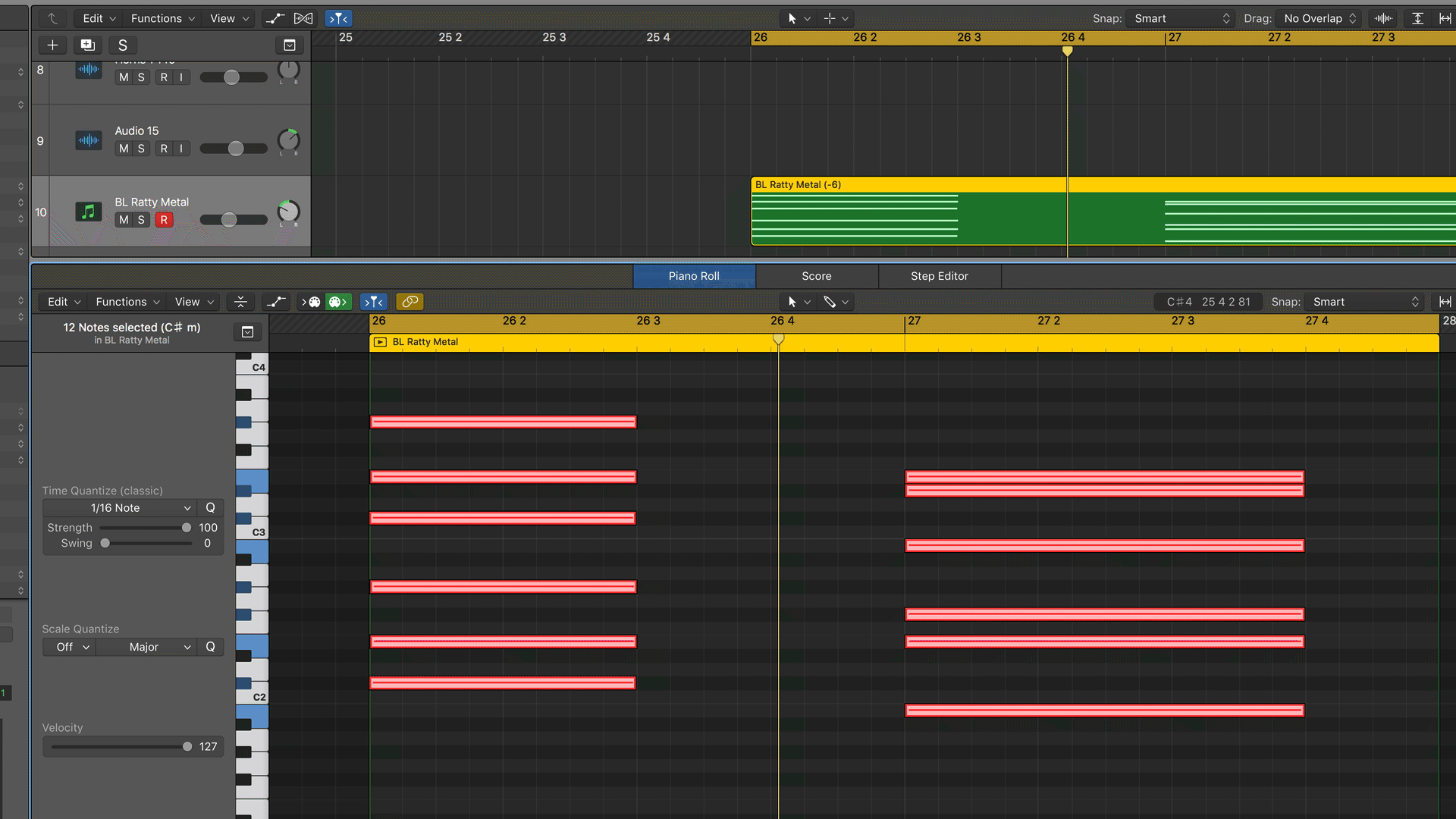
5 WAYS TO HUMANIZE TRACKS
05.12.2018
Lists
By Shane
If your track is lacking vibe, character, or swag, it might be a tad too robotic. DAWs make the editing process of music so precise it can almost make the final sound seem a little unnatural. I've seen some tutorials say that you HAVE to humanize your tracks, well I say tomayto tomahto.
BUT for those times when you need to make your track feel more human, these 5 tips are for you!
Let’s say you’re in the studio with some seasoned instrumentalists and you want them to generate certain sounds. Whether it’s a raw four-to-the-floor beat at 125 BPM or a jazzy theme played on the sax, something about the performance will be imperfect. And that's ok.
The timing might not be 100% precise and the sax player could just be slightly off-tune. It can be about subtle variations in velocity, timing and other minor details that you can’t exactly put your finger on. It’s all in the details.
Programming MIDI in your DAW is a very tedious and scientific process so it makes sense that producers develop the tendency of making everything 100% perfect and on grid.
So let’s see what are the tools at your disposal so that you can make your tracks sound natural.
1.) Avoid Every Sound Being Perfectly On Grid
Many producers make the mistake of staying completely on-grid with EVERY sound. This can not only sound unnatural, but it can also make mixing a little bit more difficult.
Let's look at how it can sound unnatural. The fact is, even with a metronome, no musician will precisely hit on the click. They might every so often, but every new chord or note, not gonna happen. These slight variances add something to the groove and to the feeling of the track. So don't be discouraged if some of your notes are slightly off grid. If it sounds good to you, odds are it will to other people.
Now lets look at how it can make mixing difficult. The easiest example is a 4 on the floor dance beat

2.) Open up an old, unfinished project
Now this is perfectly fine, don't let anyone tell you otherwise! THOUSANDS of tracks have a snare and kick hit at the exact same time. But if you want to go for a more laid back vibe, say like a Kygo track for example, or you really can't hear your snare or kick when they hit simultaneously try this

All you do is nudge the sample or MIDI note a few MS or ticks off grid. BOOM.
What about Chords? Glad you asked... You can nudge some of the notes off grid to create an almost strummed like feeling. Makes everything sound more chill

2.) Use Swing
Swing can be defined as deliberate slight variations in timing that aim to give energy and unpredictability to a rhythm. Kind of like a laziness applied to each second step of a beat.
In electronic music, the ‘swing’ function (originally called ‘shuffle’) was introduced by Roger Linn’s 1979 LM-1 Drum Computer. Linn’s system used percentages to measure the delay applied to each second step. The most popular form of swing in electronic dance music is the 16th-note swing. A 50% swing means that the second step is played half-way between the two beats.
Numbers are less important when it comes to swing. Choosing the right percentage is a matter of feeling and is best done through trial and error. Listen to how well the sounds blend together.
3.) Vary Dynamics
Believe it or not, Mozart never played a Sonata the entire time at 127 Velocity. Changes in dynamics are essential for creating emotional tension. So if you're working with samples, say hi hat samples, it's important to vary the dynamics by adjusting the volume of some hits to be louder or quieter. If you are using MIDI this is very easy, just change the velocity of some notes.
If you are using audio, try automating or adjusting clip gain. Look at this hi hat loop I programmed, it came from samples but you can clearly see without ever having to hear it, that it will have a nice dynamic range giving it a life-like feel.

4.) Use Subtle Modulation
One of the main challenges faced by producers is how they can breathe life into dull and static synth loops. A professional musician varies how he or she plays an instrument over the course of a song. They may play it more intensely during choruses or add more sustain towards the end.
There aren’t really any rules when it comes to modulation and you can really get creative while sticking to context. You can modulate the reverb, panning, chorus effect or you can complement another instrument.
Also, you should avoid straight modulation. It may be comfortable to automate with straight lines, but it could be done smoother and more natural. Use logarithmic curves to automate your volumes and effects. Better yet, you can automate using a MIDI controller or a mouse after you’ve pressed the record button.
5.) Add Human Sounds
Wrapping It Up
One of the best things you can do as an electronic music producer is to bridge the gap between man and machine, so to speak. You do it by giving life to your robotic sounds and adding movement to your loops, which will then move your audience’s feet and hearts.
That’s not to say that making your tracks sound human is necessary. If you feel that your creative direction is steering you towards a more robotic feel, then by all means, follow your gut. If you want to get a warm and organic feel, then get your Frankenstein on and start tweaking.
If your tracks are sounding too digital, try spicing things up with some organic or humanistic sounds. This is why we spent months making CODA, the sounds are inspired by organic sources and layering them with more conventional synth sounds is a game changer!
You can also apply this idea to samples. Finger snaps, claps, breaths, etc.
